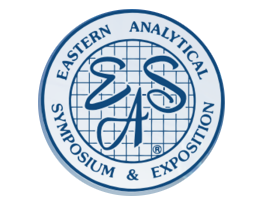NMR: Basic Theory, Spectral Interpretation and Applications
New One-Day Course E13-21, Tuesday, November 19th, 8:30am – 5:00pm
Dr. Nina C. Gonnella, Boehringer Ingelheim, Ridgefield, CT
COURSE DESCRIPTION
The purpose of this course is to provide a basic understanding of Nuclear Magnetic Resonance (NMR) as it applies to spectral interpretation of small organic molecules. An overview of NMR instrumentation and fundamental theory of nuclear resonance will be presented. Concepts of the chemical shift, J-coupling, relaxation and the nuclear Overhauser effect (NOE) will be discussed. Emphasis will be given to structure elucidation, which experiments are essential to structure determination of small molecules, how to obtain accurate integrations and analysis of 1H and 13C 1-Dimensional spectra as well as 2-Dimensional homonuclear and heteronuclear correlated spectroscopy. Applications relevant to the Pharmaceutical industry will be emphasized. These applications will include compound identification, trace analysis, region- and stereochemistry, quantitative NMR (qNMR) and study of reaction intermediates.
WHO SHOULD ATTEND
This course will benefit analysts, scientists, researchers, and managers who use NMR spectroscopy to elucidate chemical structures. The course is designed for beginners as well as scientists familiar with the technology. Beginners will receive a fundamental introduction to NMR theory and application. Those experienced with NMR will benefit by learning systematic approaches to data acquisition and interpretation of spectra and applications relevant to pharmaceutical Research and Development.
TOPICS
1. Introduction
* Historical Perspective
2. Instrumentation
* Magnets/RF/Probes/Peripherals
3. Fundamental of NMR in Structure Elucidation
* Magnetic properties of nuclei
* Experimental set-up (Tune/match, shim, adjust receiver gain)
* Data processing (Fourier Transformation, Apodization)
* Relaxation of nuclei (T1) and (T2) and Integration
* Essentials of Data interpretation
4. A Strategic Approach to Spectral Interpretation
* How to approach a problem
* Solvent selection
* Amount of sample
* Use and Analysis of Multipulse NMR experiments
– DEPT experiment
– Homonuclear Correlated Spectroscopy (COSY, TOCSY, NOESY, ROESY)
– Heteronuclear correlated spectroscopy (HMBC, HMQC, HSQC)
– When to use solvent suppression
– When to use LC-SPE-NMR
– Importance of Mass Spectrometry and chemical reaction schemes
5. Data Processing
6. Applications
* Basic NMR interpretation of small molecules (work through several test examples)
* Trace analysis by NMR
– Degradants
– Impurities
– Metabolites
* Variable temperature studies
– Trapping reaction intermediates
– Examining rotational barriers
* qNMR
– System suitability
– Measurement accuracy
– Validation process
* Complementarity of solution NMR and solid state NMR. Use of solution NMR in solid state assignment
ABOUT THE INSTRUCTOR
Dr. Nina C. Gonnella is a Senior Research Fellow at Boehringer Ingelheim. She heads the NMR group (consisting of solution, solid state and LC-NMR capability) as well as sharing co-responsibility for the Single Crystal X-ray facility. Her prior experience includes Ciba-Geigy/Novartis where she managed an NMR group in areas that included: small molecule characterization, protein-ligand structure elucidation and in-vivo drug metabolism. Nina held a position as adjunct professor at the University of Medicine & Dentistry of NJ (UMDNJ) (Graduate Program) where she participated in a graduate lecture series on structure based drug design. She subsequently joined Abbott Laboratories (Worcester Massachusetts) as a Group Leader of an NMR-LCMS group with focus on elucidating chemical structures and conducting protein-ligand binding studies. She has served on scientific review boards including an NIH Grant Review Committee as a primary reviewer. She has authored and co-authored over 70 peer review journal articles, authored a book chapter, as well as a book entitled “LC-NMR: Expanding the Limits of Structure Elucidation” CRC press 2013.

